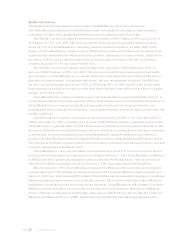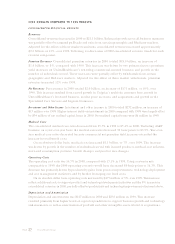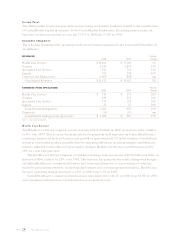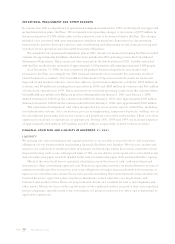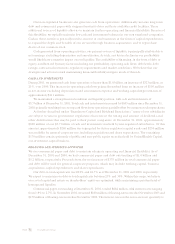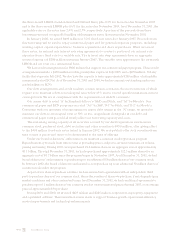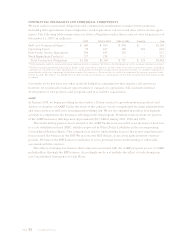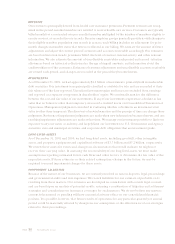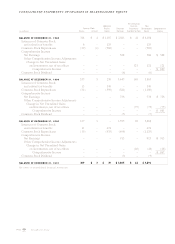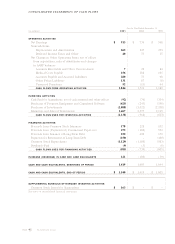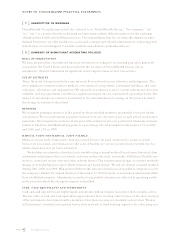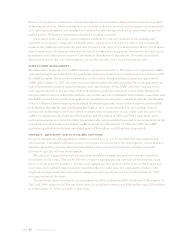United Healthcare 2001 Annual Report Download - page 35
Download and view the complete annual report
Please find page 35 of the 2001 United Healthcare annual report below. You can navigate through the pages in the report by either clicking on the pages listed below, or by using the keyword search tool below to find specific information within the annual report.
PAGE 34 UnitedHealth Group
REGULATORY CAPITAL AND DI VIDEND RESTRICTIONS
We conduct our operations through our wholly-owned subsidiaries. These companies are subject to
standards established by the National Association of Insurance Commissioners (NAIC) that, among other
things, require them to maintain specified levels of statutory capital, as defined by each state, and restrict
the timing and amount of dividends and other distributions that may be paid to their parent companies.
Generally, the amount of dividend distributions that may be paid by a regulated subsidiary, without prior
approval by state regulatory authorities, is limited based on the entity's level of statutory net income and
statutory capital and surplus. The agencies that assess our creditworthiness also consider capital adequacy
levels when establishing our debt ratings. Consistent with our intention of maintaining our senior debt
ratings in the “A” range, we maintain an aggregate statutory capital and surplus level for our regulated
subsidiaries that is significantly higher than the level regulators require. As of December 31, 2001, our
regulated subsidiaries had aggregate statutory capital and surplus of approximately $2.0 billion, more
than $1.1 billion above the $850 million of required aggregate capital and surplus.
CRI TICAL ACCOUNTING POLICIES AND ESTIMATES
Critical accounting policies are those policies that require the application of management’s most
challenging, subjective or complex judgments, often as a result of the need to make estimates about
the effect of matters that are inherently uncertain and may change in subsequent periods. Critical
accounting policies involve judgments and uncertainties that are sufficiently sensitive to result in
materially different results under different assumptions and conditions. We believe that our most
critical accounting policies are those described below. For a detailed discussion of these and other
accounting policies, see Note 2 to the Consolidated Financial Statements.
MEDICAL COSTS
A substantial portion of our medical costs payable balance is based on estimates. This balance includes
estimates for the costs of health care services people have received, but for which claims have not yet
been submitted, and estimates for the costs of claims we have received but have not yet processed. We
develop medical costs payable estimates using actuarial methods based upon historical claim submission
and payment data, cost trends, customer and product mix, seasonality, utilization of health care
services, contracted service rates and other relevant factors. The estimates may change as actuarial
methods change or as underlying facts upon which estimates are based change. We did not change
actuarial methods during 2001, 2000 and 1999.
Management believes the amount of medical costs payable is adequate to cover the company’s
liability for unpaid claims as of December 31, 2001; however, actual claim payments may differ from
established estimates. Assuming a hypothetical 1% difference between our December 31, 2001
estimates of medical costs payable and actual costs payable, 2001 earnings from operations would
increase or decrease by approximately $20 million and basic and diluted net earnings per common share
would increase or decrease by approximately $0.04 per share. Adjustments to medical costs payable
estimates are reflected in operating results in the period in which the change in estimate is identified.



